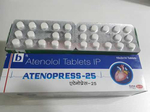pdnol
Introduction to pdnol
Pdnol is a medication designed to help manage and treat specific health conditions. It is important to understand how it works, its uses, and any precautions you should take while using it.
Composition of pdnol
Pdnol contains a combination of active ingredients that work together to provide relief from symptoms. The exact composition may vary depending on the formulation, so it's essential to read the label or consult with a healthcare professional for detailed information.
Uses of pdnol
- Relieves mild to moderate pain
- Reduces fever
- Alleviates symptoms of cold and flu
- Helps manage inflammation
Side effects of pdnol
Common side effects:
- Nausea
- Dizziness
- Headache
Serious side effects:
- Allergic reactions (such as rash, itching, swelling)
- Severe dizziness
- Trouble breathing
Precautions of pdnol
Before taking pdnol, inform your doctor if you have any allergies, pre-existing conditions, or if you are taking other medications. It is crucial to follow the prescribed dosage and not to exceed it, as this can lead to serious health issues.
How to Take pdnol
- Take pdnol as directed by your healthcare provider.
- Swallow the tablet whole with a glass of water.
- Do not crush or chew the tablet.
- Take it with or without food, as advised by your doctor.
- Stick to the prescribed schedule for optimal results.
Conclusion of pdnol
Pdnol can be an effective medication for managing pain, fever, and inflammation when used correctly. Always follow your healthcare provider's instructions and be aware of any potential side effects. If you experience any severe reactions, seek medical attention immediately.
Similar Medicines
Disclaimer : This information is not a substitute for medical advice. Consult your healthcare provider before making any changes to your treatment . Do not ignore or delay professional medical advice based on anything you have seen or read on Medwiki.
pdnol
Prescription Required
Manufacturer :
Pharma Drugs & ChemicalsComposition :
atenolol












.svg)
